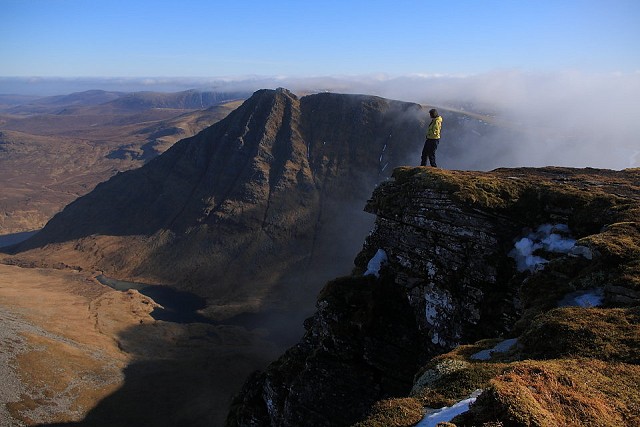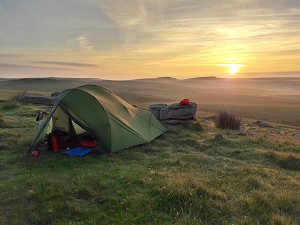
In an unprecedented show of unity eight organisations concerned with conservation, wild land and access to the countryside have jointly issued an open letter calling for greater protection for Scotland's landscapes. Between them the groups represent over a third of a million members.
Current government consultations on the Scottish Planning Policy and the National Planning Framework are an 'opportunity to set the national planning rules for many years to come', they say.
Leaders of the organisations – The Association for the Protection of Rural Scotland, the John Muir Trust, the Mountaineering Council of Scotland, the Munro Society, the National Trust for Scotland, Ramblers Scotland, The Scottish Rights of Way and Access Society and the Scottish Wild Land Group – between them representing over 350,000 members, welcome moves by the Scottish Government and Scottish Natural Heritage to safeguard Scotland's landscapes but claim that their existing proposals do not go far enough.
'We support the increased protection proposed for National Parks and National Scenic Areas, although this merely formalises the present de facto position' they say.
In quite a radical proposal, the groups also want planning controls to extend beyond the borders of ring-fenced areas, urging that: 'protection should apply ...where development is proposed beyond their boundaries that would impact on the very qualities they were established to safeguard.'
In addition several current planning applications for wind farms in core wild land areas should be stopped now, the groups insist, if the Scottish Government's recent conversion to the importance of landscape conservation is to have any substance.
'Our iconic landscapes are key to our economic and environmental future and our collective wellbeing – they must not be sacrificed to over-development through oversight or short-term thinking'
In the letter, the organisations question whether the wording of the draft Scottish Planning Policy and National Planning Framework is tight enough:
'The current draft states that (in National Nature Reserves, wild land and other important areas) wind power developments will be acceptable 'where it can be demonstrated that any significant effects on the qualities for which the area is identified can be substantially improved by siting, design or mitigation.'
'This will allow inappropriate developments to be approved because of lack of clarity in using subjective words such as 'significant' and 'substantially' when set against the primacy afforded in government policy to economic and energy development' they suggest.
The groups also raise concern that local democratic processes may be undermined by national-level decision-making, a central government strong-arm tactic that many believe is currently being employed across Scotland to impose major developments on unwilling communities:
'If local authorities and their electorates think particular local landscapes are important then this should not be over-ridden nationally' urges the letter.
Speaking on behalf of the eight organisations, the Chairman of the National Trust for Scotland, Sir Kenneth Calman said:
'As MSPs return to their constituencies over the summer we hope that all, whether in Government or opposition, give serious consideration to the landscape around them and what it represents for the people they represent.'
'Recent surveys, such as the one undertaken by the John Muir Trust and one conducted by my own charity, show that a majority of Scots are very greatly concerned about the future of our wild land and local landscapes. This is why we have come together to put our names to this open letter – our landscapes need better protection and this is what the people of Scotland want.'
'Our iconic landscapes are key to our economic and environmental future and our collective wellbeing – they must not be sacrificed to over-development through oversight or short-term thinking.'
The letter in full:
As a group of eight organisations with over 350,000 members who value Scotland's high quality landscapes we commend the Scottish Government for recognising the value of Scotland's wild land, which is without price. However, we must emphasise that all impacts upon valued areas need to be managed, not simply developments within such areas. We feel that the Scottish Government, Scottish Natural Heritage and other organisations must now use all relevant policies to safeguard the experiential qualities that make Scotland's landscapes so valuable to residents and visitors.
We welcome the growing recognition in national government of the importance of Scotland's landscapes and the need to ensure their special qualities are not lost through unsuitable development. The current government consultations on the Scottish Planning Policy and the National Planning Framework are an opportunity to set the national planning rules for many years to come.
We support the increased protection proposed for National Parks and National Scenic Areas, though this merely formalises the present de facto position. Such protection should apply also where development is proposed beyond their boundaries that would impact upon the very qualities they were established to safeguard. While the current greatest threat is large onshore wind developments, the same considerations should apply equally to any large development proposal, including transmission lines.
We fully support the recognition of the importance of wild land but are very concerned at the level of protection proposed for these and other important areas such as National Nature Reserves. The current draft states that in such areas wind power developments will be acceptable "where it can be demonstrated that any significant effects on the qualities for which the area is identified can be substantially overcome by siting, design or mitigation." This will allow inappropriate developments to be approved because of the lack of clarity in using subjective words such as "significant" and "substantially" when set against the primacy afforded in government policy to economic and energy development. Core Areas of Wild Land as defined by Scottish Natural Heritage should be given the same level of protection as National Scenic Areas, including protection from visually intrusive developments beyond their boundaries. Several current planning applications lie within Core Areas of Wild Land. They must be rejected now if there is to be substance to the government's affirmation of wild land's importance.
We are concerned at the proposal that locally significant landscapes, designated as such by local councils, should be regarded nationally as areas where there are "opportunities for wind farm development". If local authorities and their electorates think particular local landscapes are important then this should not be over-ridden nationally. The consultations close on 23 July. Our members will expect the outcome to be a planning framework that ensures no more of Scotland's iconic landscapes are damaged.
Charles Strang, Convenor, Association for the Protection of Rural Scotland; John Hutchison, Chairman, John Muir Trust; Brian Linington, President, Mountaineering Council of Scotland; Eleanore Hunter, President, The Munro Society; Sir Kenneth Calman, Chairman, National Trust for Scotland; David Thomson, Convener, Ramblers Scotland; George Menzies, Chairman, Scottish Rights of Way and Access Society; John Milne, Co-ordinator, Scottish Wild Land Group













Comments